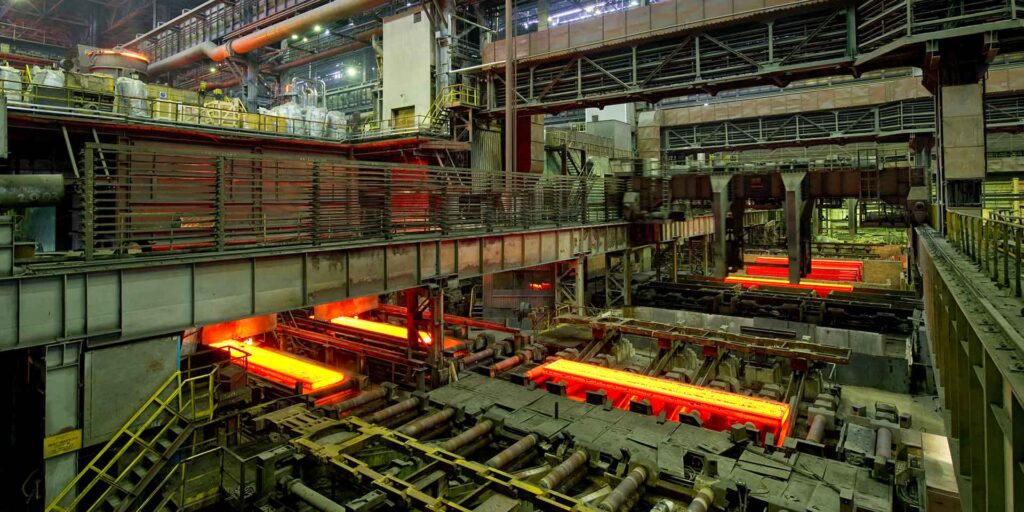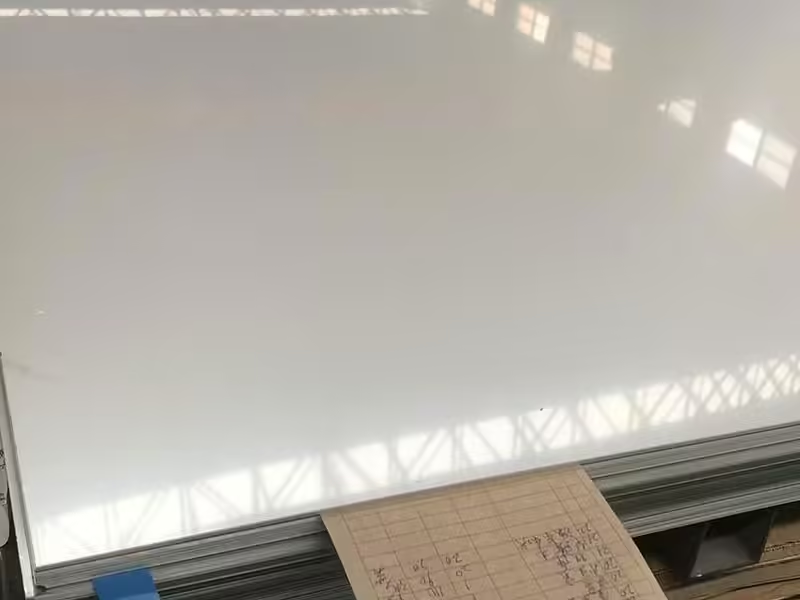مرحباً بكم في مدونتي!
قبل أن نتعمق في المحتوى، يسعدني انضمامكم إليّ على منصاتي للتواصل الاجتماعي، حيث أشارك المزيد من الأفكار، وأتفاعل مع المجتمع، وأنشر التحديثات. إليكم كيفية التواصل معي:
فيسبوك:https://www.facebook.com/profile.php?id=61571539990739
لنبدأ رحلتنا معًا. آمل أن تجدوا هذا المحتوى ثريًا وجذابًا وقيّمًا.
جدول المحتويات
مقدمة
عند العمل بالفولاذ، سواءً بالتشكيل أو اللحام أو الصب أو المعالجة الحرارية، فإن معرفة درجة انصهار الفولاذ أمرٌ بالغ الأهمية. لماذا؟ تُحدد هذه الدرجة الدقيقة كل شيء، من قوة المادة ومتانتها إلى كفاءة المعالجة وأداء المنتج. إن فهم ما يذوب، ومتى، وكيف، هو أساس الاستخدام الآمن والفعال للفولاذ في مختلف الصناعات.
في هذه المدونة، سنستكشف أساسيات وتفاصيل سلوك انصهار الفولاذ، ونستكشف كيف تُغيّر السبائك هذه الأرقام، ونشرح أهمية ذلك لتصنيعكم، ونجيب على جميع أسئلتكم. ستحصلون على نصائح من الخبراء، ورؤى واقعية، وبيانات موثوقة تُبرز كيف تؤثر هذه الخاصية الفريدة على نتائج المشاريع في كل مرة.

ما هي درجة انصهار فُولاَذ?
أساسيات الحديد النقي مقابل الفولاذ
يتكون الفولاذ أساسًا من الحديد مع الكربون وعناصر أخرى. ينصهر الحديد النقي عند درجة حرارة تقارب 1538 درجة مئوية (2800 درجة فهرنهايت)عند إضافة الكربون أو عناصر السبائك، تنخفض درجة الانصهار - أو ترتفع أحيانًا - حسب التركيب. لذا، عند الحديث عن درجة انصهار الفولاذ، عادةً ما نشير إلى نطاقات زمنية محددة بدلًا من النقاط الثابتة.
نطاقات الانصهار النموذجية للصلب الشائع
| نوع الفولاذ | تعبير | مدى الانصهار (°م) |
|---|---|---|
| الفولاذ الكربوني (سبائك منخفضة) | ≤0.3% C | 1450–1520 |
| سبائك الفولاذ المتوسطة | 0.3–0.6% C + Mn، Si، Cr، Ni | 1400–1510 |
| فولاذ عالي الكربون / فولاذ الأدوات | ≥0.6% C + W، Mo، V | 1300–1450 |
| الفولاذ المقاوم للصدأ (304/316) | 17–19% الكروم، النيكل + الكربون، المنغنيز | 1400–1450 |
تم تأكيد هذه الأرقام من خلال جداول ASM International المعدنية وتدعم العمليات الواقعية في الصب واللحام والتشكيل.
لماذا تعتبر درجة انصهار الفولاذ أمرًا بالغ الأهمية في التطبيقات
نجاح التشكيل والصب
في عملية التشكيل، يُسهّل تسخين الفولاذ إلى ما دون درجة انصهاره بقليل أو أعلى بقليل من درجة انصهاره عملية التشكيل. يؤدي التسخين القليل جدًا إلى تشققات وضعف في التدفق؛ بينما يؤدي التسخين الزائد - وخاصةً فوق درجة الانصهار - إلى تآكل السطح، أو تكوّن القشور، أو تكوّن خبث غير مرغوب فيه.
بالنسبة لعملية الصب، فإن معرفة نطاق الانصهار يضمن تصلب سبيكة الفولاذ الخاصة بك مع بنية حبيبات مناسبة ومسامية ضئيلة، وهو أمر ضروري للمكونات الهيكلية مثل أغلفة الآلات أو أعمدة الكرنك.
سلامة اللحام والمفاصل القوية
في اللحام، تتشكل مناطق منصهرة أثناء الانصهار. يساعدك فهم درجة حرارة الانصهار على التحكم في المناطق المتأثرة بالحرارة ومنع الانصهار غير المرغوب فيه أو التدهور المعدني. على سبيل المثال، يتطلب لحام الأدوات عالية الكربون درجات حرارة دقيقة للتسخين المسبق والتداخل لتجنب التشقق.
عمليات المعالجة الحرارية
تعتمد عمليات مثل التلدين والتطبيع والتبريد بشكل كبير على معرفة درجة حرارة الانصهار لتحديد النقاط الحرجة، مثل A1 (727 درجة مئوية) وA3 (912 درجة مئوية) للفولاذ الكربوني. يتيح لك هذا التحكم في تحولات الطور (الأوستينيت، والمارتنسيت، إلخ) التي تحدد صلابة أو متانة المنتج النهائي.
العوامل التي تؤثر على درجة حرارة انصهار الفولاذ

تأثير محتوى الكربون
كلما زادت نسبة الكربون، انخفضت درجة الانصهار. قد تبدأ فولاذ الأدوات عالي الكربون بالانصهار عند درجة حرارة أقل من 1300 درجة مئوية. يؤثر هذا على استجابة الفولاذ للعمليات الحرارية، ومدى ملاءمة بعض السبائك للتطبيقات القاسية.
عناصر السبائك
الكروم، الموليبدينوم، التنجستن، الفاناديوم - يمكن لهذه العناصر إما أن ترفع أو تخفض نقاط الانصهار اعتمادًا على التفاعل
النيكل والمنجنيز - غالبًا ما يكونان أقل نطاقات الانصهار ولكنهما يزيدان أيضًا من الصلابة ومقاومة التآكل
السيليكون – يساعد على إزالة الأكسدة ويقلل الذوبان قليلاً
الشوائب والشوائب
يمكن للعناصر النزرة مثل الكبريت أو الفوسفور أو الأكسجين أن تشكل مركبات ذات نقطة انصهار منخفضة تسبب قصرًا ساخنًا - فشلًا هشًا في درجات الحرارة العالية.
المعالجة الحرارية والبنية الدقيقة
تُحدد البنية الدقيقة للفولاذ - الفريت، والبيرليت، والمارتنسيت - القوة الميكانيكية وسلوكيات التصلب قرب الانصهار. ولذلك، تلعب جداول بيانات المصنع ومخططات الطور دورًا حاسمًا أثناء المعالجة.
سيناريوهات العالم الحقيقي: حيث تكون درجة حرارة انصهار الفولاذ هي الأكثر أهمية
المسابك الصناعية والصب
في صب تروس الصب، أو أغلفة المضخات، أو أجسام الصمامات، يُعدّ صب الفولاذ عند درجة الحرارة المناسبة (فوق درجة الانصهار ولكن تحت تأثير الاضطراب) أمرًا بالغ الأهمية. يُحسّن الحفاظ على درجة حرارة السبيكة بين 10 و20 درجة مئوية فوق نطاق الانصهار من ملء القالب ويُقلل من المسامية.
مصانع اللحام وتصنيع السيارات
يستخدم تجميع السيارات اللحام الآلي على الهياكل الفولاذية، مما يتطلب تحكمًا حراريًا دقيقًا للحفاظ على سلامة الهيكل واستقرار الأبعاد. ويهدف الموردون إلى تجنب التشوهات والشقوق الناتجة عن ارتفاع درجة الحرارة.
البناء والتصنيع الثقيل
تعتمد هياكل مثل الجسور والرافعات على وصلات ملحومة ومطروقة. قد تؤدي المعالجات الحرارية التي لا تراعي عتبات الانصهار إلى فشلها تحت الحمل، خاصةً في ظل ظروف الإجهاد الدوري أو البيئي.
صناعة الأدوات والقوالب
تصل فولاذات الأدوات إلى درجات انصهار قريبة من درجات انصهارها أثناء التشكيل والمعالجة الحرارية. قد يؤدي تجاوز هذه الدرجة إلى خشونة الحبيبات، أو ظهور تشققات، أو فقدان المتانة، وهو أمر كارثي للأدوات التي تتطلب دورات عمل طويلة.
كيف يقيس المهندسون بيانات درجة الانصهار ويستخدمونها
المسح التفاضلي للسعرات الحرارية (DSC)
يُحدد DSC بدقة متى يتحول الفولاذ من الحالة الصلبة إلى السائلة. ويوفر تفاصيل انتقال الطور الأساسية للفولاذ منخفض السبائك أو الفولاذ المتخصص المستخدم في التطبيقات عالية الحرارة مثل الطيران والفضاء.
النمذجة الديناميكية الحرارية
تعمل أدوات البرمجيات التي تحسب مخططات الطور (على سبيل المثال، Thermo‑Calc، وJMatPro) على محاكاة سلوك الذوبان والتصلب بناءً على تركيبات معقدة - مما يساعد المهندسين على تصميم سبائك جديدة أو تحسين نوافذ المعالجة الحرارية.
معايير الصناعة المعتمدة
تنشر منظمات مثل ASM International وSAE International وISO جداول بيانات الانصهار. ويحدد المصنعون نطاقات انصهار السبائك كمواصفات قياسية، يعتمد عليها المصنعون.

نصائح للتعامل مع درجة الانصهار عمليًا
ارجع دائمًا إلى ورقة البيانات المعتمدة للمطحنة لمعرفة السبائك الدقيقة التي تستخدمها
السماح بالهوامش: قم بالتسخين بمقدار 10-20 درجة مئوية فقط فوق درجة الحرارة الصلبة - أكثر في الصب، وأقل في التشكيل - لتجنب ارتفاع درجة الحرارة
استخدم أجواء خاملة أو مختزلة أثناء التسخين بدرجة حرارة عالية لمنع الترسب والأكسدة
تبريد الفولاذ ببطء بعد عتبات الانصهار لتجنب الشقوق الناتجة عن الإجهاد أو الهشاشة
خاتمة
فهم درجة انصهار الفولاذ يرتبط هذا النظام ارتباطًا مباشرًا بكل مرحلة من مراحل تصنيع المعادن، بدءًا من تشكيل القطع المعدنية فائقة اللمعان، وصولًا إلى لحام الهياكل المتينة، والمعالجة الحرارية للأدوات عالية الأداء. وهو يدعم السلامة والجودة والكفاءة والقدرة على التنبؤ في العمليات الصناعية.
إذا كنت تعمل مع الفولاذ في اللحام أو الصب أو صناعة الأدوات أو التصنيع وتريد رؤى مخصصة أو مساعدة في تحسين ملفات تعريف درجة الحرارة، فإن خبراء المعادن لدينا مستعدون لدعمك.
📩 اتصل بنا اليوم لمناقشة المواد والعمليات الخاصة بك وكيفية الحصول على الحرارة الصحيحة في كل مرة.
الأسئلة الشائعة
لماذا تختلف درجة انصهار الفولاذ كثيرًا؟
نظرًا لأن تركيب السبائك، ومحتوى الكربون، والبنية الدقيقة كلها تغير سلوك الانصهار - لذا فهو نطاق، وليس نقطة.
هل يمكنك لحام أي نوع من الفولاذ إذا كنت تعرف نطاق الانصهار؟
إن معرفة ذلك تساعدك في تحديد المعلمات، ولكن القدرة على اللحام تعتمد أيضًا على مكافئ الكربون، والسمك، والتحكم في مدخلات الحرارة.
هل تؤثر درجة حرارة الانصهار على القوة؟
نعم، يؤدي التسخين فوق درجات الحرارة الحرجة إلى تغيير بنية الفولاذ، وإعادة التسخين إلى ما بعد درجة الانصهار يمكن أن يؤدي إلى تدهور خصائصه بشكل دائم.
ما مدى الدقة التي أحتاجها؟
عادة ما تكون درجة الحرارة ±10 درجة مئوية مناسبة للصب أو التشكيل بالطرق، ولكن العمل على السبائك الدقيقة قد يتطلب ±5 درجة مئوية، مما يتطلب التحكم الحراري المتقدم.
ماذا يحدث إذا قمت باللحام بالقرب من نقطة الانصهار؟
أنت معرض لخطر الاحتراق، أو خشونة الحبوب، أو هشاشة المنطقة الحساسة. ابقَ أقل من هذا الحد حرصًا على سلامتك.

